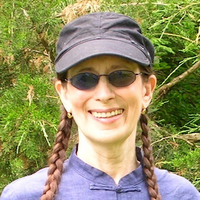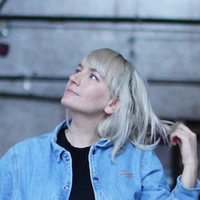On how you make history every day
Prelude
Angel Abreu joined Tim Rollins and Kids of Survival (K.O.S.), an artist collaborative based in the South Bronx, in 1986 and has been a steadfast member working on all major works, projects, and exhibitions. Rollins and K.O.S. have exhibited internationally, and their work resides in over 120 permanent collections around the world, including Tate Modern and MoMA, where Abreu is the youngest artist at 14 on the roster. Since the passing of its founder Tim Rollins in 2017, the project has reinvented itself and become Studio K.O.S. under Abreu’s leadership. They have continued to conduct socially engaged workshops with youth and educators around the country. Abreu and Studio K.O.S. are the 2020 honorees of Art Resources Transfer (A.R.T.).
In addition to Abreu’s work with Studio K.O.S., he continues his own painting practice in his Hoboken NJ studio. Abreu is on faculty in both the BFA Fine Arts and MFA Art Practice departments of the School of Visual Arts in New York City. He also serves on the Education Committee of The Bronx Museum of the Arts in The Bronx, NY.
Conversation
On how you make history every day
Artist and educator Angel Abreu on why all education is art, seeing yourself as part of a continuum, the self-curation of experience, and the importance of just making things.
As told to Ken Tan, 2359 words.
Tags: Art, Writing, Education, Mentorship, Collaboration, Inspiration, Identity, Education, Success, Beginnings.
The Kids of Survival story is legendary. Tim Rollins was brought in by the South Bronx’s Intermediate School 52 to create a curriculum that folded art-making in with reading and writing for students who were classified as “at risk.” Walking into his classroom, Room 318 of I.S. 52, and being introduced to all these new art terms and concepts at such a young age, how did you feel?
The first day I met Tim, he decided he was going to give us all a test. It was the seventh grade, and frankly I had no idea what was going on. Nor did I want to be at that school in the first place, having avoided it for two years because of its bad reputation.
The test was a multiple choice test with questions like: Of these four artists, who’s not a Cubist? And: What year was the first Surrealist Manifesto written? I could read these questions, but I had no idea what it was about. But you see, Tim was setting us up. He assured us that that test would be the same exact one for the midterms, and guaranteed that we will all get A’s.
That hit me like a lightning bolt. I realized I met someone kindred, who was going to change my life. From that day every single time we walked into the studio Tim would say, “Okay, everyone, today we are making history.” Tim established a system for us to believe that we could make change. That change was not just for those with socioeconomic advantages, who looked nothing like us, but that we could actually make change.
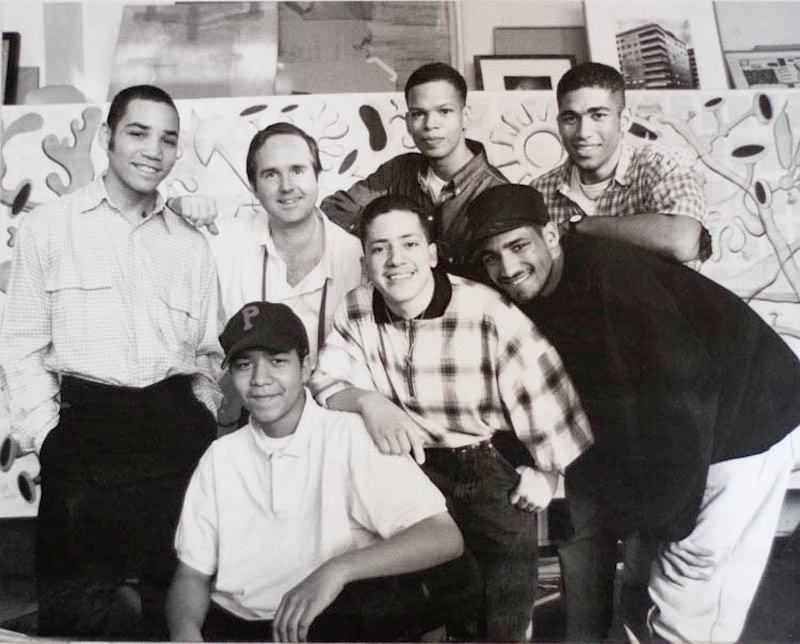
Tim Rollins and K.O.S.1993, (top left to right) Rick Savinon, Tim Rollins, Robert Branch, Angel Abreu (bottom left to right) Jorge Abreu, Carlos Rivera, Victor Llanos. Courtesy of Angel Abreu and K.O.S.
It was also in your nature to be challenged.
I certainly had an innate curiosity then. I was extremely bored at home, but didn’t know what kind of outlets I needed. In the mid to late ’80s, you had a choice as a kid in the South Bronx: if you’re smart and precocious you could go into drug dealing and probably do pretty well. Or somehow escape it through education. Tim came to me at a point in my life where I could have gone in a different direction. I’m not going to say that my life would have been terrible had I not met him. Over time I learnt our relationship was reciprocal, that he needed us just as much as we needed him.
However, the idea of “making history today” is ingrained in me and has become my daily mantra. Tim is sadly no longer with us, so it has become our responsibility to pass on that torch.
His method of pedagogy was definitely unique.
Tim never condescended. He never said, “Hey, oh my god, what you’re making is amazing,” which we get a lot of today. These pats on the back of children and students do nothing. You have got to elevate people and give respect to these young folk. Instead, you should say, “Look, I respect your opinion. I respect your ideas. Maybe you should think about this and this,” and try to open avenues to be able to express themselves in ways that they may not have anticipated. It’s about transcendence.
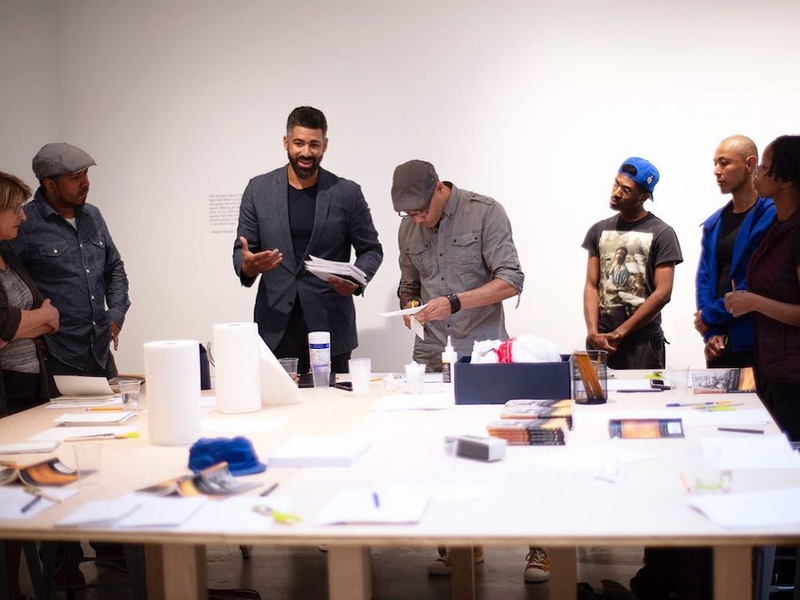
Angel Abreu at a Studio K.O.S. workshop in 2019 with students from School of Visual Art, New York. Courtesy of Lehmann Maupin Gallery New York and Studio K.O.S.
Now that you have been teaching younger people yourself, what role does age play in an individual’s creativity?
Age may have something to do with how receptive one may be with certain concepts. They talk about it with learning languages that when you’re younger, your brain is more open to making complex cognitive connections. But yet, I hesitate when we talk about age and people’s receptivity: we have just finished a K.O.S. workshop with both educators and librarians respectively; we then did the same workshop successfully with high school students.
I think that learning has more to do with experience. Younger folk may begin with a cleaner slate, so you can add on more. Whereas people advanced in age, their experience and preconceptions can actually affect their receptivity to new concepts.
The more you do, the more you start to formulate opinions about the world. Your perspective gets more fixed. So mutability may be more inherent in youth.
Absolutely. And hunger. I felt that hunger for knowledge. It was visceral.
What was the process in which you (and the K.O.S.) extrapolate meaning and interpretations from the classic literary texts?
We look at a lot of color symbolism—that’s the easy part. But we also visualize the characters in the stories. They’re suspended in timelessness, ready to be plucked by the generations in ways not anticipated by the author.
That’s a metaphor for what good art is: Art that transcends generations, race, socioeconomics and gender, but offers something to whoever is ready to receive and thus bring their own experiences to the table.
The great philosopher, John Dewey, talked about a triangular relationship with how we make and experience art. At the top is the maker, artist, author, etc. Then in this corner is the manifestation of art that becomes its own entity, independent of the maker. Finally, there’s the audience. How they all interact, each cannot possibly control, yet it’s symbiotic.
The receiver interprets in a way to spin off into a new triangle, and so on. So it’s this idea of conversation, a dialogue that’s essential for creativity. So to that point, what we see in each of the K.O.S. works is the distillation of years of research, creative exchange, and action, involving a whole community.
We see ourselves as a think tank. Our work is indeed evidence of the deep research, and contribution of all involved. It takes us years to distill the purest form as we see it. They’re imbued with deep meaning, for us at least.
They could also be markers in a point of time. Maybe when new members or audiences are introduced, a new set of markers are needed…
That’s it. That’s what art is. And in this long continuum of art making, I actually tell my students to know where their place is. We don’t live in a vacuum. That they are in conversation with the past, present and the future; and that conversation never ends.
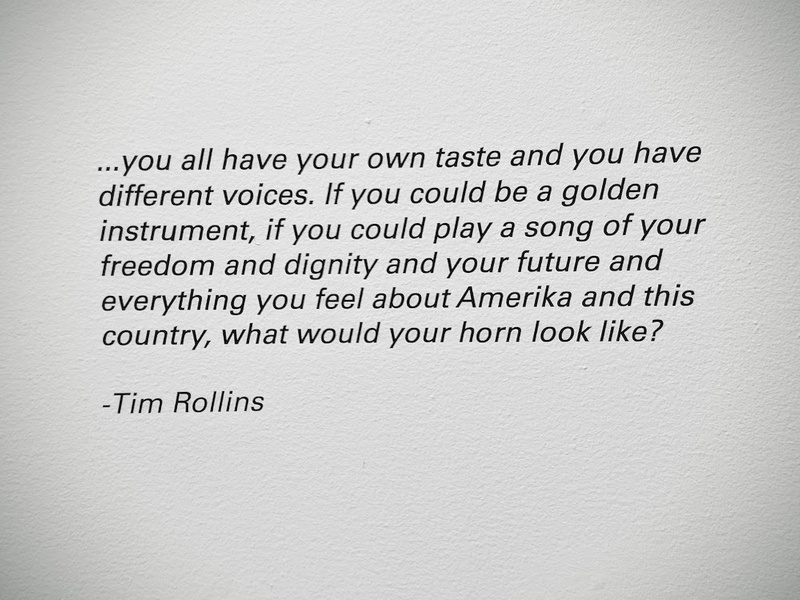
Image courtesy of Ken Tan
With K.O.S., a community comes together to activate as a group. Can you speak about one’s individual expression in contrast? For instance, an artist can paint away, like Balzac’s Frenhofer, but not impact anyone else, let alone the world.
Martin Luther King Jr has been a tremendous influence on our practice. What you are asking can be summed up in a sermon that he made in 1957, when he talked about how an individual has not started living until he or she can rise above the narrow confines of ones’ individualistic concerns, towards the broader concerns of all humanity. That has been our fighting dogma. Art to me has always been about and for the community, about bringing people together who otherwise wouldn’t come together.
This is the pushback that collaborations like K.O.S. have been getting. The system needs to change. There needs to be a paradigm shift as to how we define creatives or artists. It is possible to leave your ego at the door and make work that changes lives. We’re a living manifestation of that.
What are your thoughts on technical craft to package otherwise nebulous ideas and theories into an object that can be experienced?
Technical aptitude is absolutely of the essence. We only use archival materials as we want our work to last 500 years, at least. We’ve always talked about being immortal through the making of this work. And really, the only way that can happen is if the actual manifestations survive through the ages.
This is a point of contention with some of my art students, because of a current shift towards more conceptual thinking, and less focus on the physical object. It is vital to find a balance. Obviously if you don’t leave something that’s lasting, depending on what the scope of the art is, it’s just fleeting.
That said, I also have an issue with how artworks are treated now. They are in climate controlled environments. We treat these objects better than we treat each other. Because they are also commodities. That’s a whole other issue.
How do you avoid fleeting moments of success?
Put yourself in positions where you feel challenged. Seek uncomfortable situations where you can expand your mind and that’s when the fleeting moments leave. Because then you open yourself to opportunities for those lightning bolt moments we talked about before. Like what I experienced when I walked into Tim’s classroom at 12.
You are a voracious reader. Can too much knowledge hinder creativity?
I would actually say so. At some point you’ve got to just do. At some point you’ve got to trust that whatever it is that you’re putting into your head will manifest into something worthwhile.
You need to just make. Your responsibility as an artist, or even as a citizen, is to apply your own experiences in a way that feels right to you. The proverbial “flash of inspiration” may or may not come. You’ve got to trust that the research you’ve done is enough for you to make something significant and it’s not going to come out right away. If you don’t get into this yin and yang with the research and the actual making, you can most certainly become stagnant.
What do you think is art’s role in education and vice versa?
Everything in education has to do with art. As far as idea-making is concerned, I find an interesting correlation between comedians and artists. Comedians have a sense of humor about the world, and look at it not necessarily in a cynical way, but laterally that makes people think differently. Their approach to an extent is by trial and error. They use their materials empirically.
The life of a comedian right now is terrible. There’s a huge responsibility to send the right messages out. But in similar ways, it’s the same for an artist, too.
Goya had that. Dark as they may be, his Los Caprichos are humorous satires.
They are supposed to be funny. Goya’s making fun of the status quo. I’m so glad you brought that up because actually I’m working literally right now on Los Caprichos with some of my high school students. We will be delving into the history of Spain in the late 1700s to early 1800s through the lens of Goya, while he was making these works.
We talked about a continuum. Here’s an example again of that suspension of work in time, that’s there to be plucked. It’s to show, especially to young folk, that we’re all humans. We put on our pants one leg at a time. We try to do our best every single day. To think, some artists get put up on a pedestal and it’s like, “Whoa, how can I possibly even reach those heights?” We’re all human beings. We all deal with the same situations.
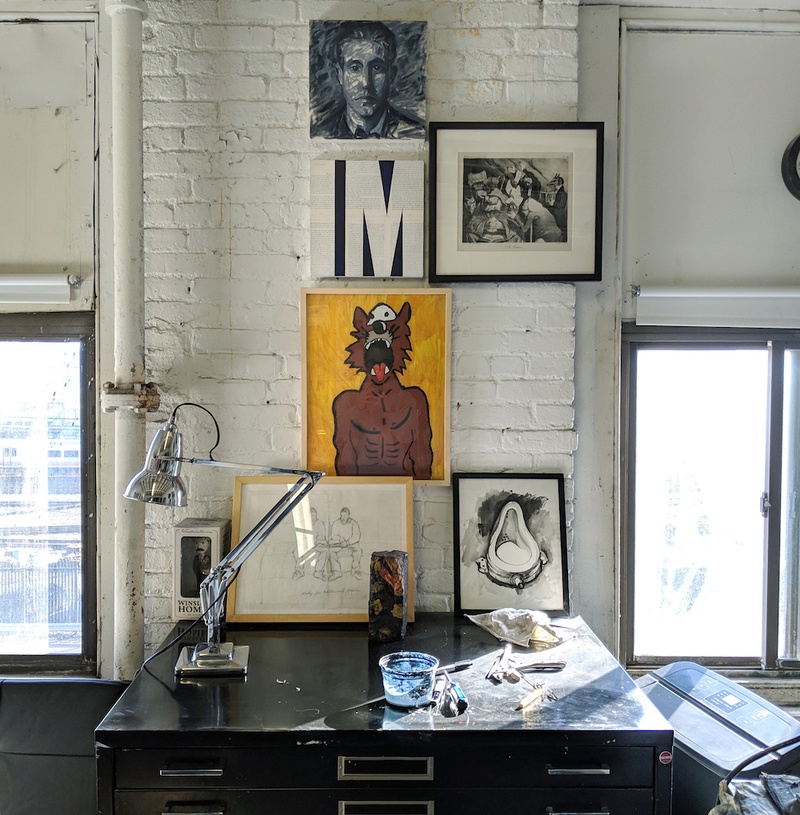
Angel Abreu’s studio, New Jersey. Image courtesy of Ken Tan
Our view may have gotten quite parochial, and patience so thin that we don’t really realize that all these things have happened before. It’s cyclical. War. Some despot. Pandemics…
Exactly. So let’s stop being consumers and let’s actually pay attention to what is happening in our surroundings. Let’s be responsible for our actions that could possibly make a difference.
What have you done every day without fail?
I get on my rowing machine for 30 minutes every day. It’s a water rower. I just love hearing the water rush through, and I just roll along. That just puts me at peace. It’s one of my favorite times of the day.
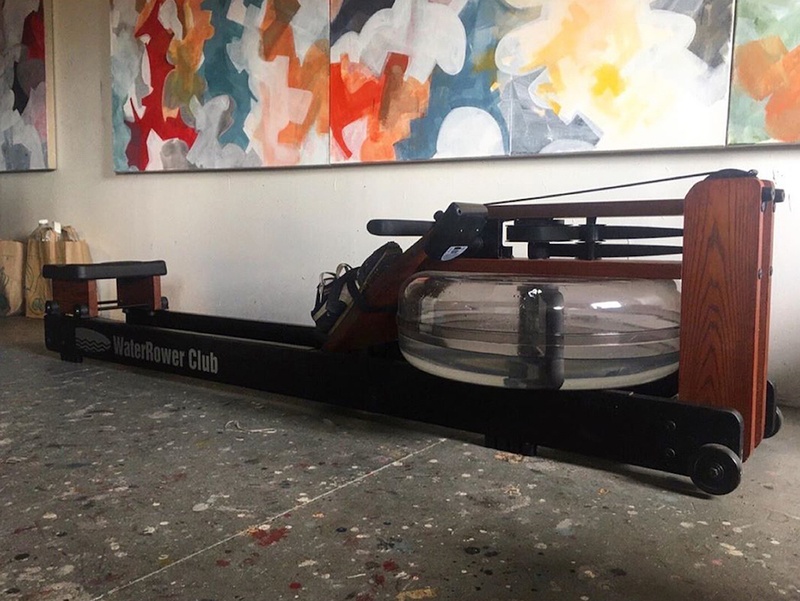
Image courtesy of Angel Abreu
What’s one book you keep returning to whenever your compass is off?
William Faulkner’s As I Lay Dying. Which is a little funny to say, especially with these times. This great book juxtaposes various relationships to present how individuals perceive the same events. Each chapter is written in the voice of a character. Even characters who have passed away, they get a voice. You follow the narrative, but through the accounts of the characters.
The book is a great metaphor for how we all are: we tend to see everything based on our personal experiences, but the complete story is made of many unique voices.
Angel Abreu Recommends:
Keep a sketchbook/journal and make entries as often as possible. This minimizes the fleeting moments. Minimizes the panicked moments of having the great ideas in the middle of the night that almost certainly aren’t that great or you forget anyway or both. If anything you get some great amusement when you go back and read your entries from years ago.
Saying ‘Yes’ a lot more than ‘No’ to new opportunities. This comes directly from my mentor Tim Rollins. There are times when the knee jerk reaction is to say no, but I’ve found that this initial reaction is fueled more by fear than being rational. As long as they are safe activities, always be up to challenge yourself and grow.
Being cognizant of the tremendous power of self-curation of experiences. Any of the cultural outlets that you decide to expose yourself to will always manifest itself in whatever work you do or at least be a great escape from our daily stresses. We are all the ultimate artworks.
- Name
- Angel Abreu
- Vocation
- Artist, Writer, Educator
Some Things
Pagination
